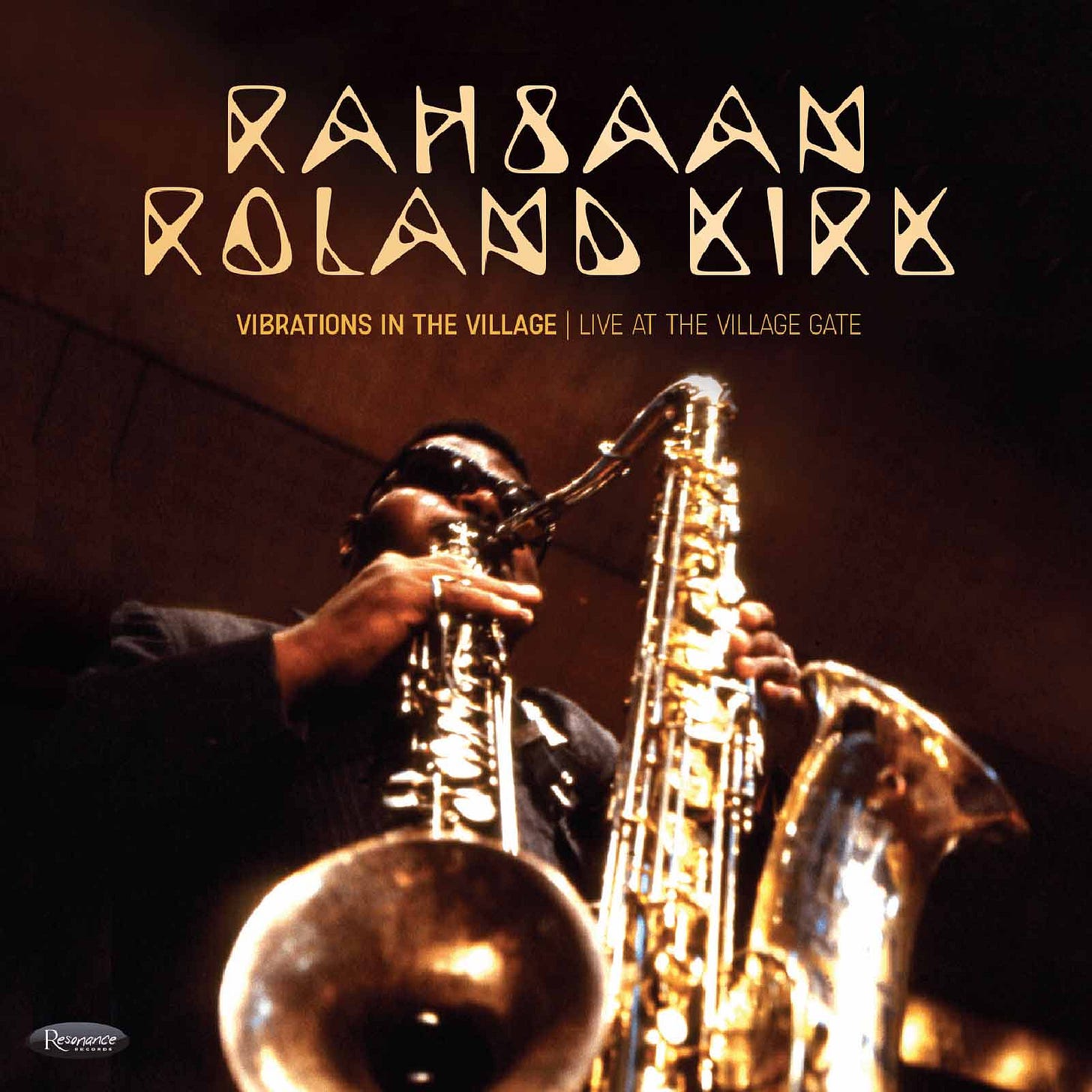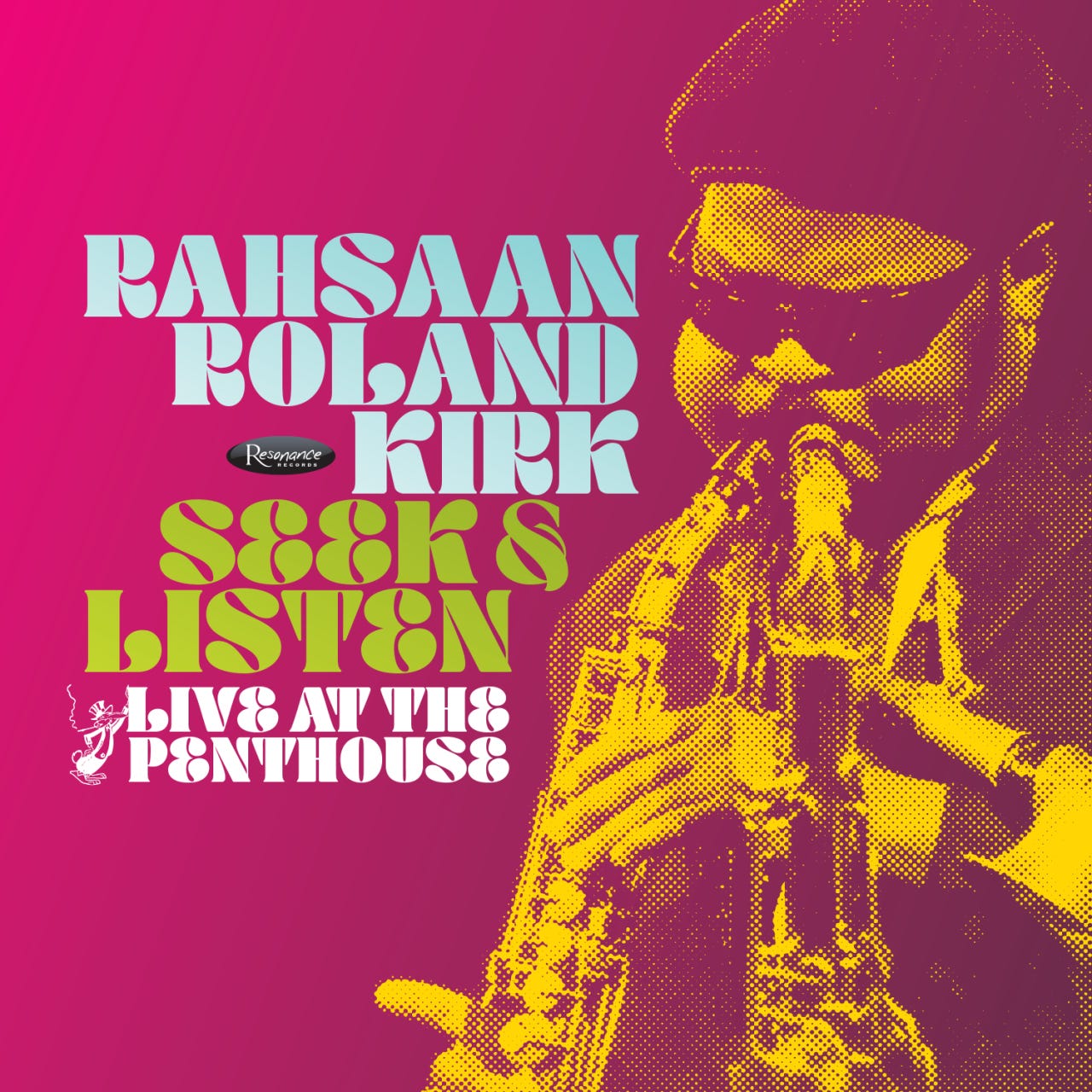On stage, Rahsaan Roland Kirk looked intimidating—with his sunglasses and multiple reed instruments hanging around his neck. At first glance, uninitiated audience members might assume they were going to be bombarded by a free jazz extravaganza, with wild blowing on multiple instruments screeching out songs lasting a half hour or more each. [Photo above of Rahsaan Roland Kirk courtesy of Wikipedia]
Nothing was further from the truth. The sunglasses hid eyes that were sightless since age 2. And while Kirk often played multiple reed instruments at the same time, the music that came out was perfectly coherent and warm. Kirk was a tender soul, and that was reflected in his music. His tenor saxophone and flute playing were beautiful, agile, proficient and lyrical.
Now Resonance Records is releasing two previously-unheard live Kirk albums: Live at the Village Gate, recorded at the New York club on Nov. 26 and 27 in 1963, and Live at the Penthouse, recorded on Sept. 8 and 15 in 1967 at the club in Seattle.
Produced by Zev Feldman and executive produced by George Klabin, these two double albums showcase a glorious jazz artist who should be considered on par with Sonny Rollins, Pharoah Sanders, Joe Henderson and other major saxophonists of the 1960s and early ‘70s.
What set Kirk apart from the rest was his originality and smooth skill seasoned with tasteful whimsy. Kirk could play in the avant-garde idiom as well as anyone, but he also was a master traditionalist. With multiple saxophones in his mouth, Kirk played chords, becoming a one-man reed section.
Born in Columbus, Ohio, in 1927, Kirk attended the Ohio State School for the Blind. At 15, he was on the road playing R&B on weekends with Boyd Moore’s band. His ability to play two reed instruments at once made him an ideal novelty act for Moore. He began recording in 1956, and his first album, Triple Threat (King) featured him on the cover playing three saxophones.
Vibrations in the Village: Live at the Village Gate features Rahsaan Roland Kirk (ts, stritch, manzello, fl, whistle, vcl), Horace Parlan, Melvin Rhyne and Jane Getz (p), Henry Grimes (b) and Sonny Brown (d). Of the two, this one is edgier, which makes sense, since John Coltrane had just begun his free and spiritual jazz ascent and was casting a long shadow over all saxophonists of the period.
The tracks:
Jump Up and Down Fast
Ecclusiastics
All the Things You Are
Laura
Kirk’s Delight
Oboe Blues
Blues Minor at the Gate
Falling in Love With Love
Three for the Festival
Seek & Listen: Live at the Penthouse was recorded nearly four years later and features Rahsaan Roland Kirk (ts,fl,stritch,manzello,flexatone,siren,whistle,vocal), Rahn Burton (p), Steve Novosel (b) and Jimmy Hopps (d).
This album is gentler, funkier and more soul-jazz. It even artfully takes on several pop songs of the day. But there are out-there Kirk moments, including Bagpipe Medley. It was recorded at Seattle’s Penthouse by Jim Wilke, who hosted Thursday-night broadcasts at the club for KING radio and preserved the tapes.
The tracks:
The Jump Thing
Alfie
Mingus-Griff Song
Medley: Ev’rytime We Say Goodbye, I’ve Got It Bad, Sophisticated Lady, Satin Doll
Bagpipe Medley: Blues for C & T, Happy Days Are Here Again, Down by the Riverside
Ode to Billie Joe
Prelude to a kiss
Funk underneath
Lovellevelliloqui
Now please don’t you cry, beautiful Edith
Making love after hours
Which of the two is better? Honestly, they’re both great listens for different reasons. As Kirk fans know, all of his recordings are worthy and fascinating, from the 1950s to the early 1970s.
Kirk had a major stroke in 1975 and modified his instruments so he could play them with one arm. He died two years later from a second stroke. He was 42.
The two albums will be available on vinyl only on Record Store Day, Nov. 28; all other formats will be out on Dec. 5. To find a record store near you, go here.
Here’s Blues Minor at the Gate…
And here’s Alfie…




